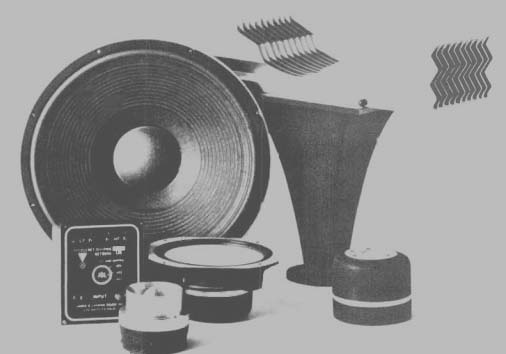
Loudspeakers--Science, Art, or Both?
IF, as someone in a Huxley novel puts it, the performing of violin music is a matter of scraping horsehair across catgut, what shall we say of the reproduction of that music by a loudspeaker? Is it something like a piece of paper fluttering in an iron frame to simulate the scraping--or is it rather a technical and aesthetic miracle? We prefer to think of it as something between those two extremes, even as the very concept and design of a loudspeaker is a compromise between the possible and the ideal.
The nature of a loudspeaker is at once very simple and very complex. Of all the component parts of a sound-reproducing system, the loudspeaker is the most conspicuous visually. It is larger than any other part; and indeed some speakers occupy more space than all the other equipment combined. It also plays the most obvious role acoustically. The speaker, after all, is literally the mouthpiece of a music-reproducing system. In the audio reproduction chain there is no sound before the loud speaker, only mechanical and electrical analogues of sound. The speaker has the demanding job of translating those replicas into actual sound. In so doing, it must behave as a passive respondent to an amplifier (which does not, or should not, pro duce sound as such), and yet in its passivity it must stir the unwilling air with the breath of life that is music. At best, then, a really high-fidelity (i.e., accurate) speaker is difficult to design and build, and even more difficult to evaluate. Indeed, the testing of a speaker-if done completely and correctly-becomes as much a kind of artistic critique as it is an engineering analysis. Perhaps one could sum up by saying that while a speaker is not a musical instrument it must be able to sound like any instrument, or any combination of instruments, including the human voice.
In stating what a speaker's intended function is, we have also implied the diversity of ways in which it may perform that function. For if a speaker must "sound like" music, music itself sounds different to different ears. "I like any speaker that puts me in the sixteenth row of Carnegie Hall" describes a listening taste that is different from, but no less valid than, "Give me a speaker that puts the percussion in a corner of my living room." One can disagree with these expressions of preference, but who can say that either is "right" or "wrong"? The particular quality of a specific speaker that endears it to one listener may entirely disqualify it for another listener of different musical taste.
The designers and manufacturers of speakers have very obligingly made available a variety of speakers to cater to all tastes, and in this volume we take careful and comprehensive note of this technological productivity. Here we find ourselves in the realm of the "possible." Yet--in this abundance of models as well as of sonic quality--we see a stretching toward the "ideal." The perfect speaker would be an infinitely small point in space, radiating all frequencies with equal intensity and omni-directionally. It would be a speaker whose performance signified the repeal of the laws of inertia, or indeed the achievement of perpetual motion. On this planet and in our space-time continuum, a realization of this is not possible, but the vision of an ultimate goal is perceptible in the work of designers and engineers. Creating new designs, devising new techniques, they give us something always a little better than we have previously known; yet each new achievement mocks its maker with old problems still unsolved or new ones just revealed. Small wonder that of all the specialists in audio, those who make speakers are regarded as poets and dreamers, as much artists as artisans. N.E.
-----------
(High Fidelity, 1976)
Also see:
HOW TO INSTALL AND LOCATE YOUR SPEAKERS--How the listening room affects sound, recommended placement for best stereo and best four-channel setups; Tips on wire size.